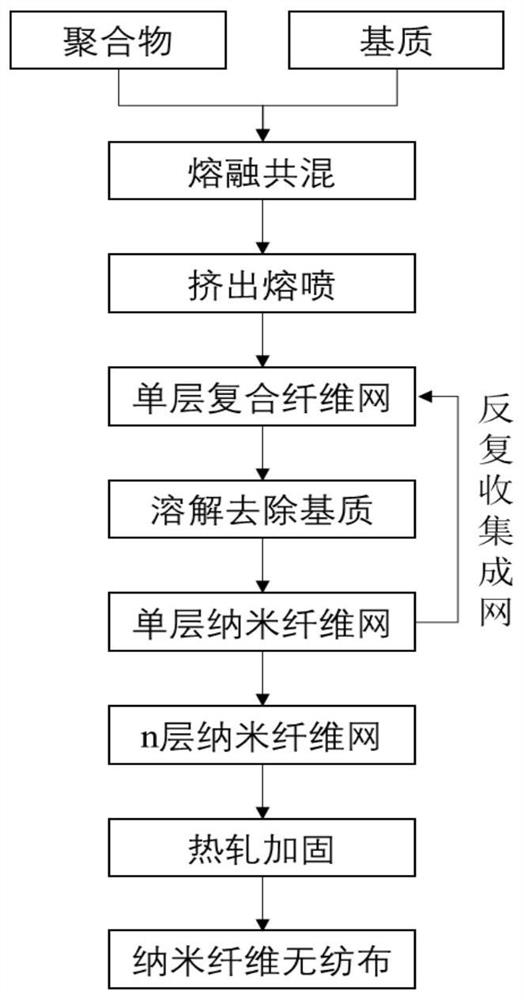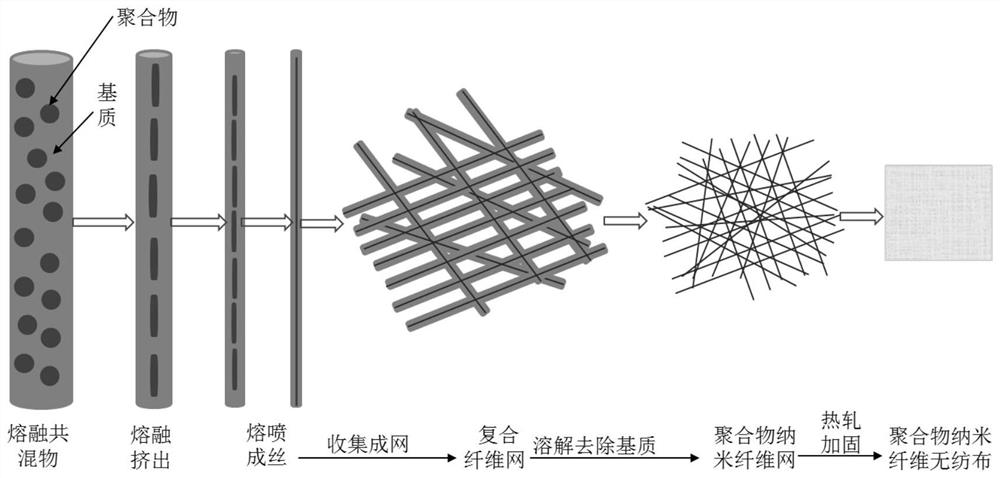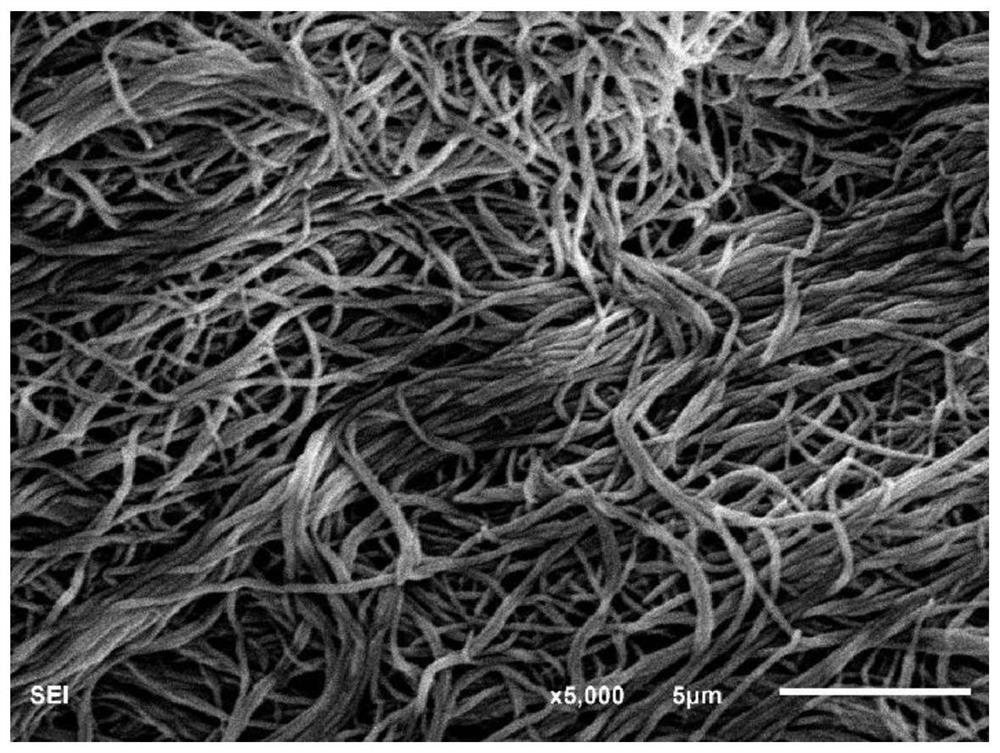A kind of preparation method of nanofiber non-woven fabric
A nanofiber and nanofiber web technology, applied in the directions of melt spinning, fiber processing, non-woven fabrics, etc., can solve the problem of difficulty in controlling two groups of polymers to be stretched into filaments alone, the decrease of nanofiber strength, and the breakage of nanofiber filaments. and other problems, to achieve the effect of strong cohesion, improved fiber stability, and high diameter uniformity.
- Summary
- Abstract
- Description
- Claims
- Application Information
AI Technical Summary
Problems solved by technology
Method used
Image
Examples
Embodiment 1
[0035] A kind of preparation method of nanofiber nonwoven fabric, it is characterized in that comprising the following steps:
[0036] S1. Melt and blend polypropylene (PP) and cellulose acetate butyrate (CAB) in a twin-screw extruder at a mass ratio of 1:9. The parameters of each zone of the twin-screw extruder are preferably set as follows: temperature in zone one: 130°C; Zone 2 temperature: 190°C; Zone 3 temperature: 210°C; Zone 4 temperature: 220°C; Zone 5 temperature: 230°C;
[0037] S2. Filter the melted fluid into the spinning box, and extrude it into filaments through the spinneret;
[0038]S3. Using high-temperature and high-pressure airflow meltblown with a temperature of 260-280°C and a pressure of 0.15-0.25MPa, the melt is stretched into ultra-fine fibers under the action of high-speed hot airflow, and solidified by heat exchange with the surrounding cold air Form composite fiber filaments, use a web forming machine to collect and form a composite fiber web, and c...
Embodiment 2
[0042] Embodiment 2 provides a kind of preparation method of nanofiber nonwoven fabric, comprises the following steps:
[0043] S1. Melt and blend polypropylene (PP) and cellulose acetate butyrate (CAB) in a twin-screw extruder at a mass ratio of 1:9. The parameters of each zone of the twin-screw extruder are preferably set as follows: temperature in zone one: 130°C; Zone 2 temperature: 190°C; Zone 3 temperature: 210°C; Zone 4 temperature: 220°C; Zone 5 temperature: 230°C;
[0044] S2. Filter the melted fluid into the spinning box, and extrude it into filaments through the spinneret;
[0045] S3. Using high-temperature and high-pressure airflow meltblown with a temperature of 260-280°C and a pressure of 0.15-0.25MPa, the melt is stretched into ultra-fine fibers under the action of high-speed hot airflow, and solidified by heat exchange with the surrounding cold air Form composite fiber filaments, use a web forming machine to collect and form a composite fiber web, and control...
Embodiment 3~8
[0050] Compared with Example 1, Examples 3-8 differ in that the preparation conditions of the polypropylene nanofiber nonwoven fabric are shown in Table 1, and the others are the same as Example 1.
[0051] Table 1 embodiment 3~8 nanofiber nonwoven fabric preparation conditions
[0052]
[0053]
[0054] Embodiment 1~8 prepares polypropylene nanofiber nonwoven fiber average diameter and nonwoven thickness as shown in table 2, as can be seen, with polypropylene (PP) and cellulose acetate butyrate (CAB) mass ratio The average diameter of polypropylene nanofibers and the thickness of single-layer non-woven fabrics gradually increased, indicating that increasing the CAB content appropriately would help reduce the diameter of nanofibers. This is because when the CAB content increases, the CAB in the spinning fine stream will more effectively prevent the PP melt phase from becoming larger, and the PP phase will be stretched and refined with a smaller particle size under the ac...
PUM
| Property | Measurement | Unit |
|---|---|---|
| diameter | aaaaa | aaaaa |
| diameter | aaaaa | aaaaa |
| thickness | aaaaa | aaaaa |
Abstract
Description
Claims
Application Information
 Login to View More
Login to View More - R&D
- Intellectual Property
- Life Sciences
- Materials
- Tech Scout
- Unparalleled Data Quality
- Higher Quality Content
- 60% Fewer Hallucinations
Browse by: Latest US Patents, China's latest patents, Technical Efficacy Thesaurus, Application Domain, Technology Topic, Popular Technical Reports.
© 2025 PatSnap. All rights reserved.Legal|Privacy policy|Modern Slavery Act Transparency Statement|Sitemap|About US| Contact US: help@patsnap.com



